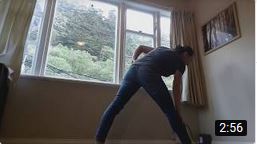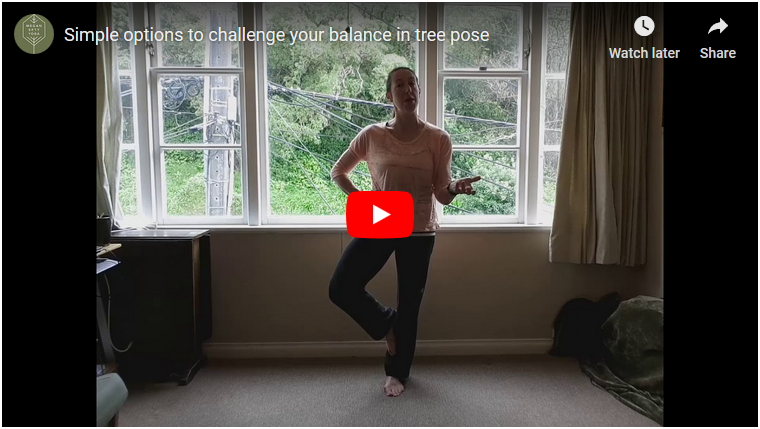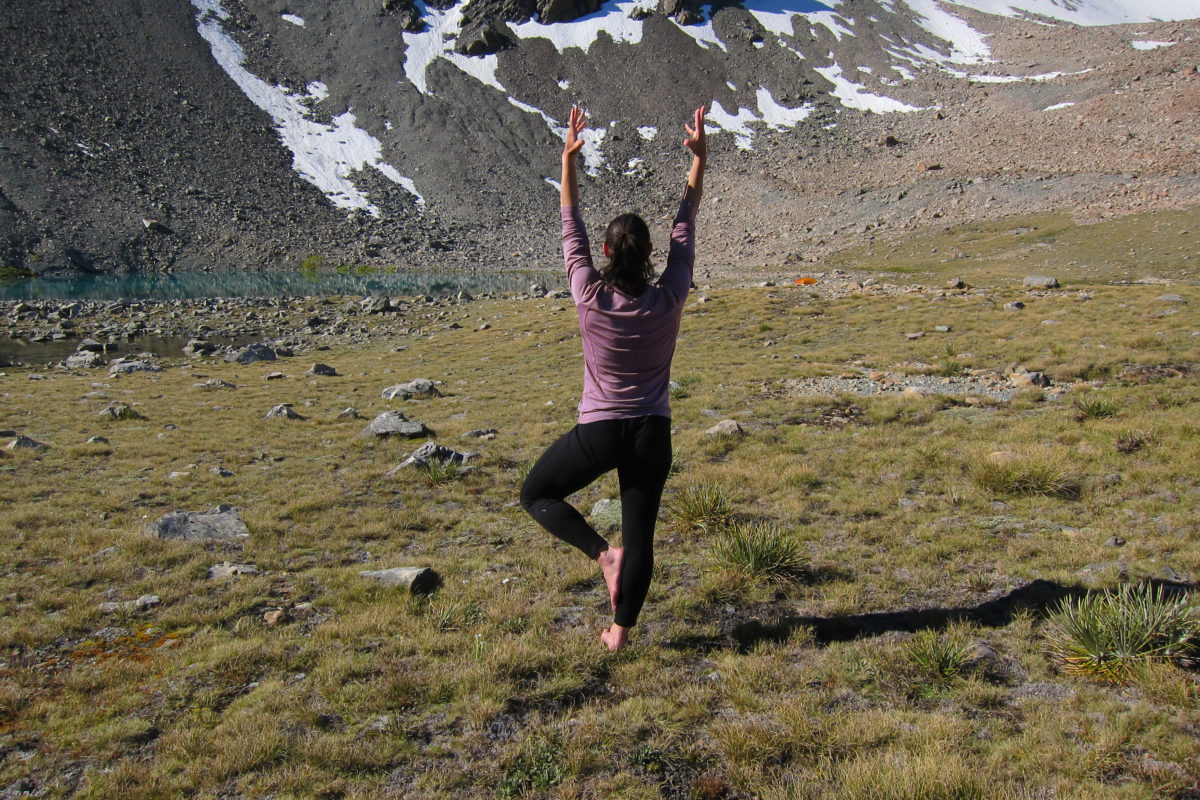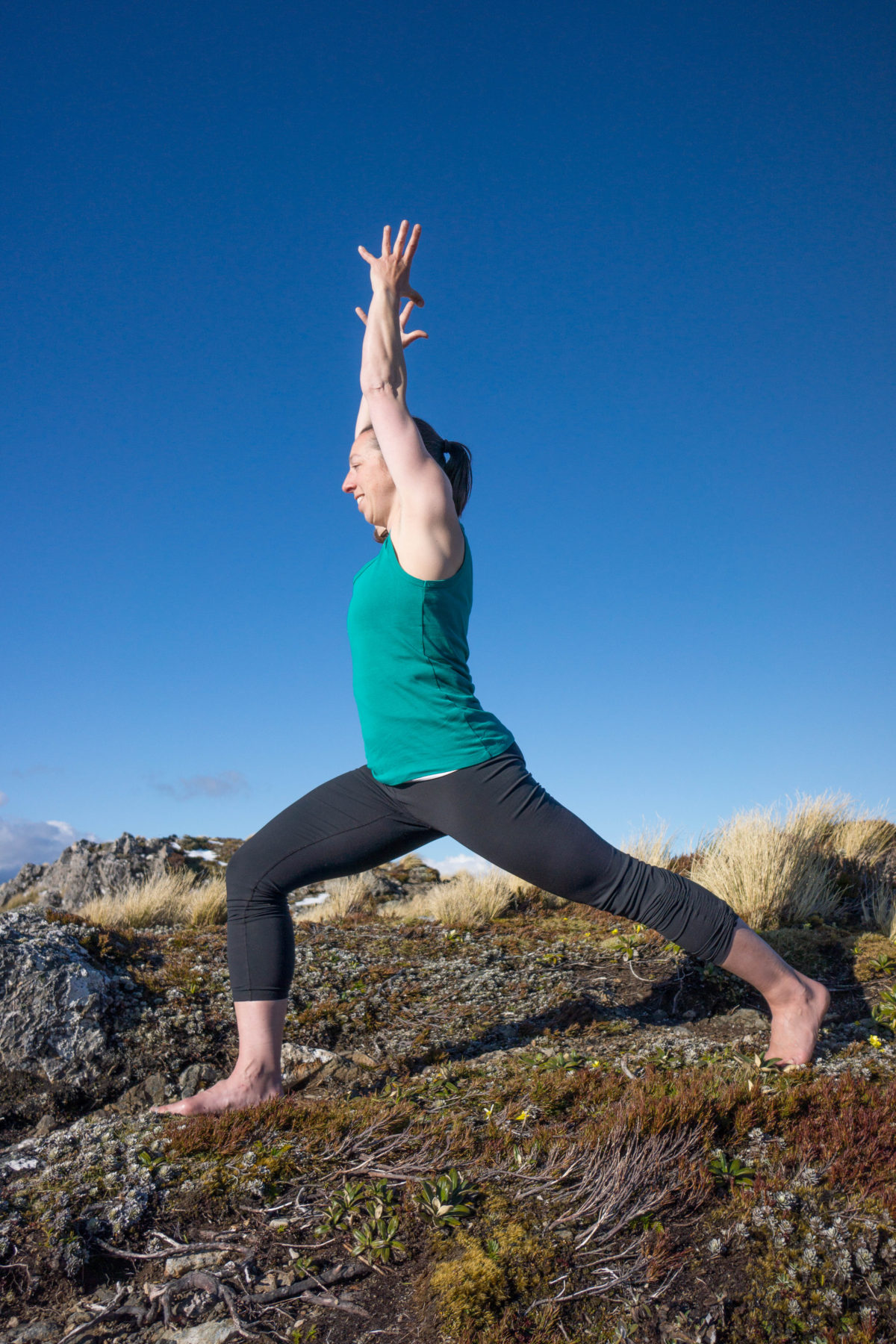Proprioception is becoming a common buzzword these days in yoga and other types of movement classes.
What is proprioception?
It is your ability to feel how your body is positioned relative to space and the other parts of your body as you move. This is what lets you walk through the house in the dark or touch your finger to your nose with your eyes closed.
Why does it matter?
When you lose your balance, proprioception helps your body to make adjustments so you can either regain your balance or prepare to fall.
What does yoga have to do with proprioception?
Yoga gives you endless opportunities to practice proprioception. This is obvious when standing on one leg or balancing on your hands. But there are also more subtle ways to work on developing awareness of your body position relative to space.
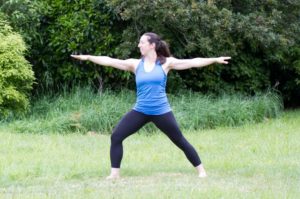 Give it a go
Give it a go
To see what I mean, try a common pose from yoga and then close your eyes to feel your body position. For example, work with warrior 2:
- Step your left foot back.
- Turn your left heel in and down so that your toes are turned out about a 45 degree angle. Front toes are straight ahead.
- Keep back leg straight, push down through your heel.
- Bring your hands to your hips.
Now close your eyes and try a few more movements:
- Slowly bend the front knee. Feel that the knee goes in a straight line following the direction of the front toes.
- Reach your right arm forward and left arm back, palms facing down.
Now feel your body:
- Are your shoulders relaxed down or rising up?
- Are your arms just below the height of your shoulders?
- Are they more to the side or front/back of your body?
- Which way is your chest facing?
- Is your chest leaning forward, or upright?
- Are you sagging in your waist and back?
- What does your neck feel like? Where is your chin?
- What do your hips feel like? Are you sticking your butt out or tucking your tailbone under?
- Are the muscles working in both legs? Or just the front or just the back leg?
- What are your feet and toes doing?
You can feel all those things in a normal yoga class, with or without your eyes open. Every position is chance to practice that body awareness and it will improve over time. Not to mention, standing poses with your eyes closed will also challenge your balance. And without the help of your vision you will need to be far more aware of the different parts of your body that are working to keep you balanced!
Proprioception is just one thing that contributes to balance. If you want to know more, check out this excellent and free chapter on Yoga for Balance from the Yoga for Healthy Aging book

